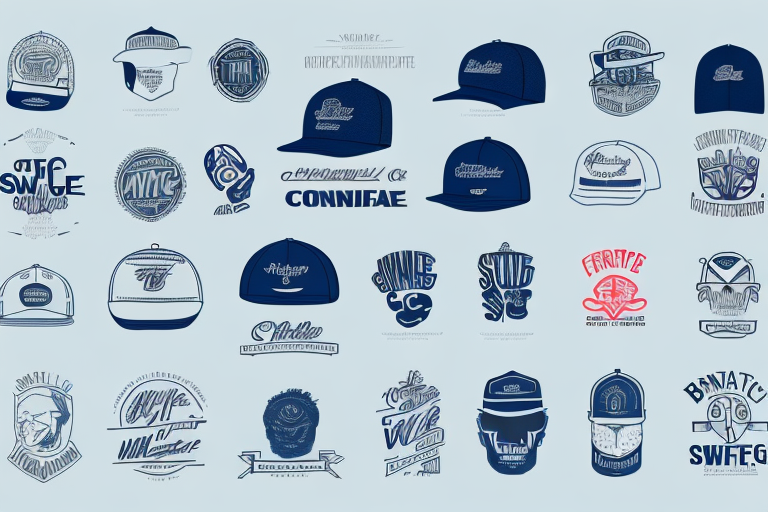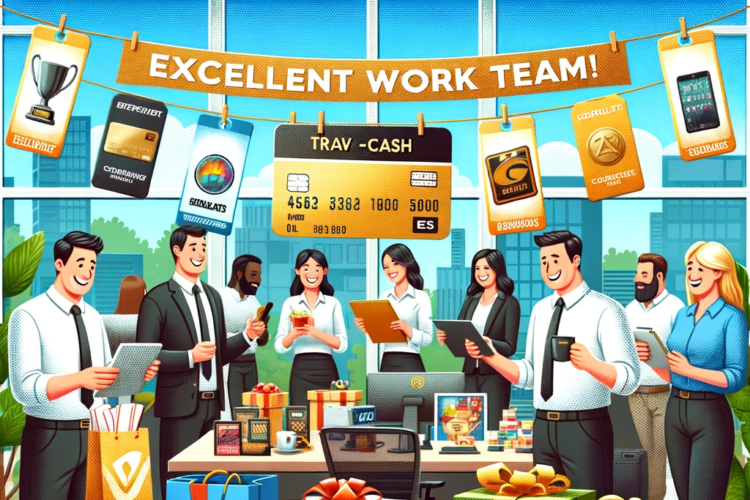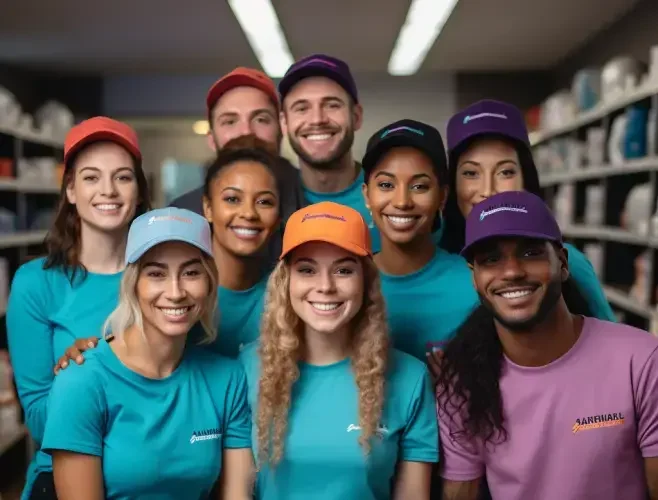
Creating Branded Swag for Maximum Brand Awareness
In today’s world, brand awareness is paramount for any business looking to succeed in a crowded marketplace. One key strategy for achieving this is to create branded swag that customers and employees can use and display, building recognition and loyalty. In this article, we’ll explore the importance of branded swag and guide you through the process of creating a successful swag campaign.
Understanding the Importance of Branded Swag
Branded swag has become an increasingly popular marketing tool for businesses of all sizes. From small startups to large corporations, companies are using branded merchandise to boost brand recognition, enhance customer loyalty, and increase employee engagement.
Boosting Brand Recognition
One of the primary benefits of branded swag is that it is an effective way to increase your brand’s recognition. By placing your logo on everyday items like t-shirts, water bottles, and phone cases, you’re creating a walking advertisement for your company. This helps your brand stand out in the minds of potential customers who may not have heard of you, as well as creating a sense of familiarity and trust with those who are already familiar with your brand.
For example, imagine someone wearing a t-shirt with your company’s logo on it. As they walk down the street or go about their daily activities, other people will see your logo and become more aware of your brand. This can lead to increased brand recognition and ultimately, more business for your company.
Enhancing Customer Loyalty
In addition to increasing brand recognition, branded swag can also enhance customer loyalty. By giving customers items that they can use every day, you’re reminding them of the positive experiences they’ve had with your company. This can lead to increased repeat business and word-of-mouth referrals, both of which are invaluable for growing your brand.
For example, if you own a coffee shop and you give your regular customers branded coffee mugs, they will be reminded of your business every time they use the mug. This can create a sense of loyalty and appreciation for your brand, leading to increased business and customer satisfaction.
Increasing Employee Engagement
It’s not just customers who can benefit from branded swag. Providing your employees with branded items like laptop sleeves or company-branded t-shirts creates a sense of pride and belonging within your team. This can boost morale and increase employee engagement, resulting in a more positive and productive workplace.
For example, if you provide your employees with branded t-shirts to wear on casual Fridays, they will feel a sense of pride in being part of your team. This can lead to increased motivation and productivity, as well as a more positive and cohesive work environment.
In conclusion, branded swag is a powerful marketing tool that can help businesses of all sizes increase brand recognition, enhance customer loyalty, and increase employee engagement. By investing in branded merchandise, you can create a lasting impression on your customers and employees, leading to increased business and a stronger brand presence.
Identifying Your Target Audience
Creating a successful branded swag campaign requires a deep understanding of your target audience. Who are you trying to attract with your swag? What are their interests, behaviors, and values? In this section, we’ll explore some key factors to consider when identifying your target audience.
Demographics and Psychographics
Demographics and psychographics are two important factors to consider when identifying your target audience. Demographics refer to characteristics such as age, gender, income, and education level. Psychographics, on the other hand, refer to personality traits, values, and interests.
By understanding the demographics and psychographics of your target audience, you can create swag that resonates with them. For example, if your target audience is primarily young professionals, you might choose sleek, modern items like phone cases or laptop sleeves. If your target audience is primarily parents, you might choose practical items like diaper bags or children’s toys.
Aligning with Your Brand Values
When choosing branded swag items, it’s important to ensure they align with your brand values. For example, if your brand focuses on sustainability, it makes sense to choose eco-friendly items like reusable water bottles or recycled tote bags. This reinforces your brand’s message and shows that you practice what you preach.
Similarly, if your brand values creativity and innovation, you might choose items that are unique or unconventional. This can help you stand out from competitors and create a memorable impression on your target audience.
Analyzing Customer Needs and Preferences
Finally, it’s important to consider the needs and preferences of your target audience when creating branded swag. What items would be useful to them in their daily lives? What would they be excited to receive?
Conducting surveys or focus groups can help you get a better sense of what your customers want, so you can design swag that’s both practical and desirable. For example, if you’re targeting college students, you might ask them what items they would find useful in their dorm rooms or on campus. If you’re targeting fitness enthusiasts, you might ask them what types of workout gear they prefer.
By taking the time to understand your target audience and their needs, you can create branded swag that not only promotes your brand, but also provides value to your customers.
Choosing the Right Branded Swag Items
When it comes to promoting your brand, branded swag can be a great way to get your name out there. However, it’s important to choose items that will make a lasting impression and represent your brand well. Here are some tips for choosing the right branded swag items:
Apparel and Accessories
T-shirts, hats, and other apparel items are popular choices for branded swag, as they offer a lot of visibility and can be worn in a variety of settings. However, it’s important to choose high-quality items that people will actually want to wear ?cheap, scratchy t-shirts are unlikely to make a good impression. Consider offering a variety of sizes and styles to appeal to a wider audience. Additionally, accessories like sunglasses or scarves can be a unique and useful addition to your swag offerings.
Tech Gadgets and Accessories
In today’s tech-centric world, branded tech gadgets and accessories are also a great choice for swag. Items like phone cases, laptop sleeves and portable chargers are useful and offer daily visibility. Consider offering items that are compatible with a variety of devices to appeal to a wider audience. Additionally, items like branded headphones or speakers can be a fun and memorable addition to your swag offerings.
Eco-Friendly and Sustainable Options
As consumers become more environmentally conscious, eco-friendly and sustainable options are becoming increasingly popular for branded swag. Items like reusable water bottles, bamboo utensils, and recycled tote bags show that your brand is environmentally conscious and socially responsible. Consider offering items made from sustainable materials or that are biodegradable to further emphasize your commitment to the environment.
Unique and Customizable Items
Finally, don’t be afraid to think outside the box and offer unique or customizable items as part of your swag offerings. Branded socks, notebooks, or puzzles may not be as ubiquitous as t-shirts, but they can be fun and memorable. Consider offering items that can be personalized with a customer’s name or that feature a unique design or color scheme to make them stand out.
By offering a variety of high-quality, useful, and memorable items as part of your branded swag offerings, you can create a positive impression of your brand and increase visibility among potential customers.
Designing Your Branded Swag
Branded swag is a great way to promote your business and increase brand awareness. Whether you’re giving away promotional items at a trade show or sending them as gifts to clients, it’s important to design them in a way that represents your brand identity and values.
Incorporating Your Logo and Brand Colors
Your company’s logo and brand colors are important components of your brand identity. When designing your swag items, it’s essential to incorporate these elements to reinforce your brand’s identity and increase recognition. Whether you choose to print your logo on a t-shirt or use your brand colors on a water bottle, incorporating these elements will help your swag stand out and attract attention.
Additionally, make sure that your logo and brand colors are consistent across all of your swag items. This will help to create a cohesive brand image and make it easier for customers to recognize your brand.
Balancing Aesthetics and Functionality
While it’s important to create visually appealing swag items, it’s equally important to ensure that they are functional and useful. A flashy design may catch someone’s eye, but if the item isn’t actually useful, it’s unlikely to be used or displayed regularly. Consider the practicality of each item and how it can be used in everyday life. For example, a branded tote bag can be used for grocery shopping or carrying items to and from work, while a branded phone charger can be used to keep devices charged on-the-go.
When designing swag items, think about how they can be integrated into your customers’ lives. By creating items that are both visually appealing and functional, you’ll increase the likelihood that they’ll be used and seen by others.
Ensuring Quality and Durability
Finally, it’s crucial to ensure that your branded swag items are of good quality and will last for a reasonable amount of time. Items that fall apart quickly will leave a poor impression on customers and may fail to achieve the desired results.
Consider the materials used in each item and how they will hold up over time. For example, a cheaply made t-shirt may shrink or fade after a few washes, while a high-quality water bottle will last for years. By investing in quality materials, you’ll create swag items that customers will appreciate and use for a long time to come.
In conclusion, designing branded swag requires a balance of aesthetics and functionality, while also ensuring quality and durability. By incorporating your logo and brand colors, creating functional items, and investing in quality materials, you’ll create swag items that represent your brand identity and leave a lasting impression on customers.
Conclusion
Creating branded swag is a great way to increase brand recognition, build loyalty, and engage both customers and employees. By understanding your target audience, carefully choosing the right swag items, and designing them with both aesthetics and functionality in mind, you can create a swag campaign that truly resonates with your audience and helps grow your brand.


